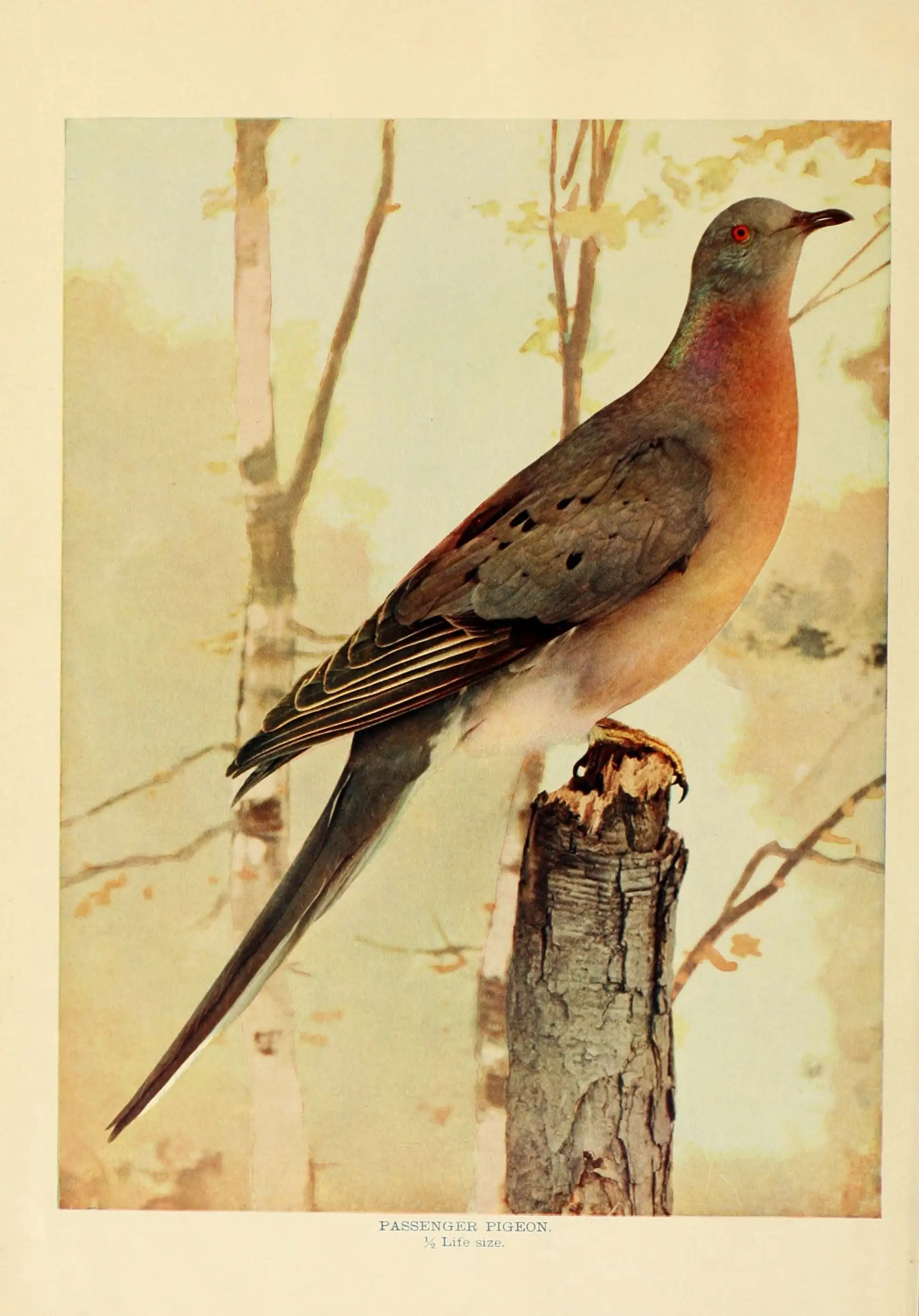Passenger Pigeon
Ectopistes migratorius
Columbiformes - Columbidae - Ectopistes
The Passenger Pigeon, a bird native to eastern North America, was the only species within its genus. DNA research on Passenger Pigeon specimens reveals that approximately 12 million years ago, the Passenger Pigeon shared a common ancestor with a cluster of North American pigeons now classified under a New World pigeon genus (Patagioenas), including the extant Band-tailed Pigeon, but subsequently underwent significant genetic divergence1.
The Passenger Pigeon measured about 40 centimeters in length, making it larger than any existing North American pigeon, including the largest living North American pigeon - the Band-tailed Pigeon (the commonly seen Rock Pigeon in urban areas typically measures just over 30 centimeters). The Passenger Pigeon exhibited sexual dimorphism: males had a grayish-blue coloration from head to back and a cinnamon-red underbelly, while females displayed similar but duller hues and were slightly smaller.
Once astonishingly abundant, the Passenger Pigeon population was estimated in the billions, making it the most numerous bird species to have ever existed in North America and possibly the world. These pigeons could fly at speeds of up to 100 kilometers per hour, forming enormous nomadic flocks that migrated repeatedly, selecting large tracts of deciduous forest as habitats. They fed on various tree species, nesting and raising their young in the trees. The Passenger Pigeon bred in the spring, laying 1-2 eggs per clutch.
In the latter half of the 19th century, the Passenger Pigeon population plummeted due to massive2 human hunting and habitat destruction caused by agricultural and industrial development. These factors led to a sharp decline in their numbers, making it impossible to sustain their highly social, predator satiation-based survival strategy, ultimately driving them to extinction. By the 1870s, Passenger Pigeons had become rare in the East of North America and moved towards less populated central regions. However, human hunting continued during their large-scale nesting periods, leading to their eventual disappearance in the wild. The last recorded wild sighting was on March 12, 19013, near Oakford, Illinois, where a male Passenger Pigeon was shot.
The last known Passenger Pigeon, Martha, died at 1 p.m. on September 1, 1914, at the Cincinnati Zoo, at approximately 29 years of age4.

-
Soares AER, Novak BJ, Haile J, Heupink TH, Fjeldså J, Gilbert MTP, Poinar H, Church GM, Shapiro B. 2016. Complete mitochondrial genomes of living and extinct pigeons revise the timing of the columbiform radiation. BMC Evolutionary Biology. 16(1). doi:https://doi.org/10.1186/s12862-016-0800-3. ↩︎
-
The Passenger Pigeon population once numbered between 30 and 50 billion, while the global human population was under 1.5 billion. The scale of hunting that drove such a populous species to extinction in just a few decades is staggering. During a pigeon-hunting contest, 30,000 pigeons had to be killed to win. See: Errol Fuller, Extinct Birds, New York, Ny U.A.: Facts On File Publ, 1987, p112. In 1881, even as the population was declining, a hunting contest near Coney Island killed 20,000 pigeons. See: Cokinos C. 2009. Hope Is the Thing With Feathers. Penguin. ↩︎
-
Some sources say March 25th. See: Greenberg, Joel, A Feathered River across the Sky, Bloomsbury Publishing USA, 2014. ↩︎
-
29 years is the most commonly cited age. However, due to records being destroyed in a fire in the 1960s, Martha’s origin and age are uncertain, with estimates ranging from 1885 to 1902, and it’s unclear if she was born in captivity. However, based on the autopsy, Martha’s internal organs were significantly aged, suggesting she was near the natural age limit, making estimates over 20 years credible. See: Cokinos C. 2009. Hope Is the Thing With Feathers. Penguin. ↩︎